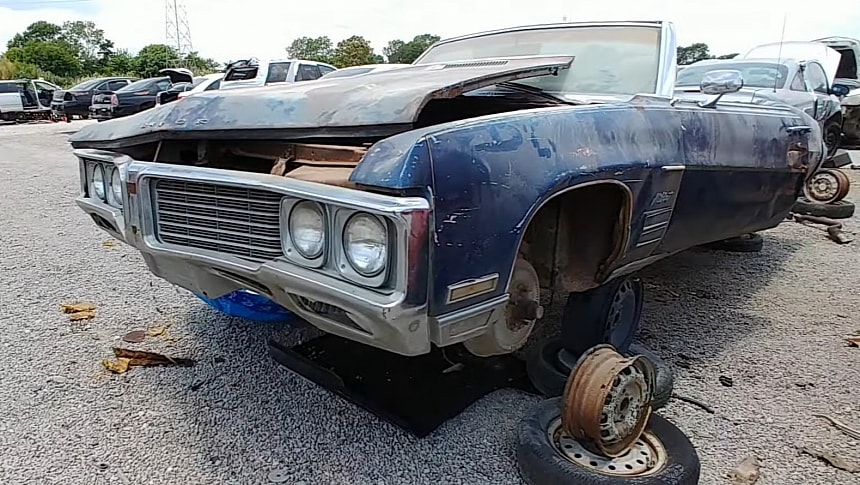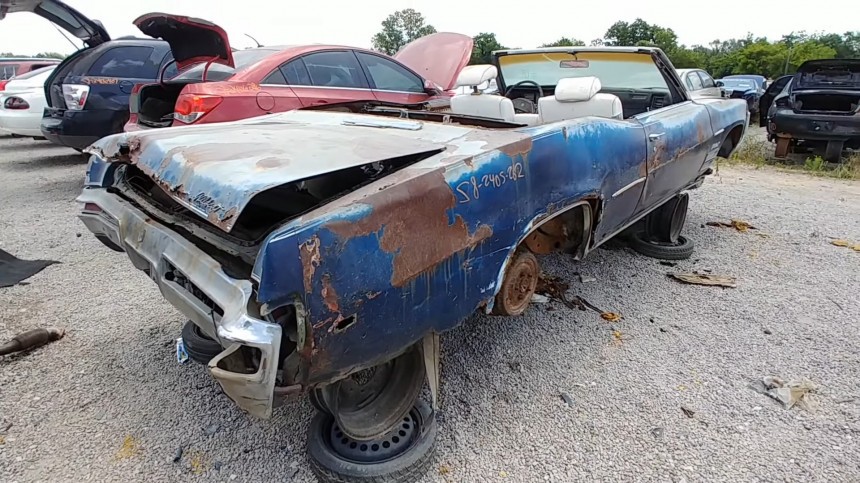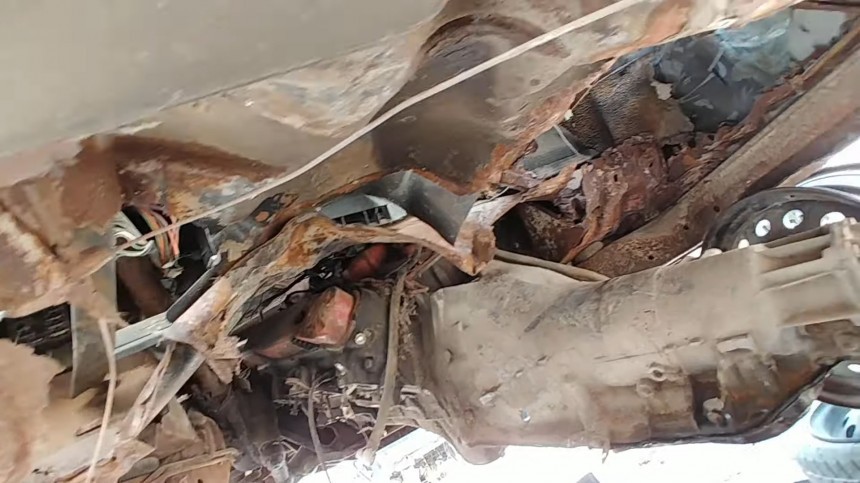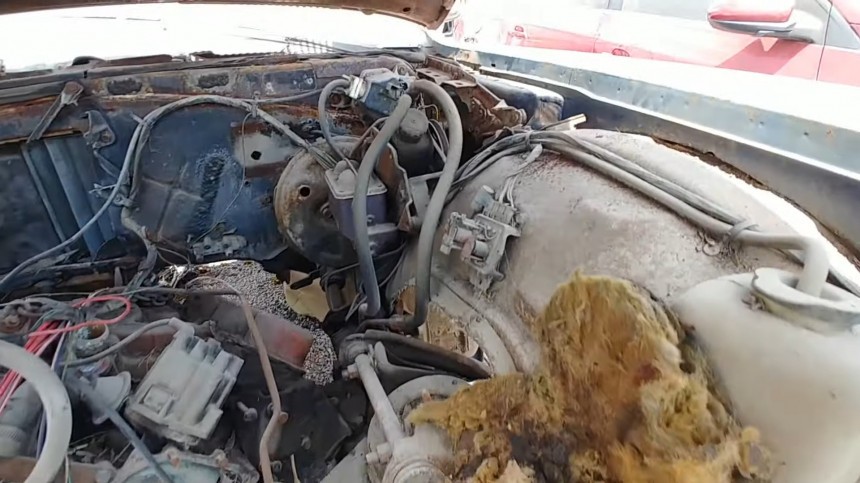In the glorious history of wonderful Buick automobiles (and by that, I mean proper Buicks that made Americans proud of their nation and their car-making companies), the Wildcat has a special place, all for itself. It saw a short seven-year production run before the nameplate woke up one day in the midst of the horsepower wars and fell on the wrong side of customers’ preferences. The year was 1970 when the last Wildcat rolled off the assembly line.
Throughout its entire existence, the Wildcat had been a very consistent seller for Buick. These numbers were not necessarily strong, but they didn’t vary much, with the exceptions of the first and the last years of production. If the 1963 model year was the debut of the nameplate as a model, with almost 36,000 cars, 1970 was a catastrophic drop to less than 24,000 examples.
Ironically, the sportiest of the full-size Buicks met its demise in the year when it got the biggest and most powerful engine option – the 455 cubic-inch V8 developing a staggering 370 horsepower and an outrageous 510 lb-ft or torque. With those gross ratings (375 PS, 692 Nm), the big Buick was finally able to claim the ‘wildcat’ image it had promoted since its inception as a trim for the Invicta in 1962.
The mighty engine was obscenely underrated, given that it was the same piston volcano that also powered the mid-size Gran Sport 455 and its GSX sibling. It should be noted that the Wildcat was rated at ten horsepower above the muscle car for some hilarious reason. Although the 455-armed Buicks were a serious contender for any hot rod of 1970, the company didn’t have the same tire-burning image and appeal as other GM divisions.
Consequently, neither the GS 455 nor the Wildcat managed to move impressive numbers. While the muscle car was kept in production for two more seasons, the Wildcat was mercilessly axed. In its final year, the big, beautiful Buick wore the ‘Custom’ name on all three body styles – two- and four-door hardtops and a convertible.
The former was the Cinderella of the order forms, with only 1,244 units requested by buyers across the country. Truth be told, droptops were fading out of favor – by the middle of the decade, all Detroit manufacturers were to abandon the open-air motoring paradigm. Before that unceremonious cutting of ties, Buick assembled one particular example of a Wildcat – this Sherwood Green with a White convertible top car shown in the video below.
Yes, I can still tell colors apart, and that blue hue is anything but green, but the car was repainted at one point. Not that it would matter one bit to the crusher operator who’s soon going to turn this once magnificent luxury ragtop into a pile of scrap iron for some smelting facility, only to respawn as who-knows-what in the future.
Unfortunately, this rare example (out of the total 1,244 convertibles, 693 had a white top, while the remaining 551 were ordered with a black one) has one foot in the grave and the other one in the coffin. It’s a heartbreaker for all classic car loyalists, and it didn’t get much love in its life, as we can plainly see straight through its pain.
That’s a literal take – the floors are not anymore. Even the big V8 is sat in a manner that reminds me of the old four-piston Pontiac engine from the 1963 Tempest, the inline-four Trophy 4 that was genuinely a half-V8 with the cylinder block angled at 45 degrees. The 455 big-block in this Wildcat is held in place by lost memories and dying hopes, as there is little else to support it (and the attached Turbo Hydramatic 400 box).
The automatic three-speed was an optional extra, the alternative to the three-speed manual standard transmission. The rear axle was the same for both gearboxes, a 2.78:1 limited slip diff. However, dealerships could install other gearing if desired. The rear of this particular moribund is probably one of a handful of pieces that can still be saved.
There’s no way of telling from the video (shot in a 100-degree Texas open-air oven by Classic Ride Society’s host Benny Sanchez) if the big motor is worth pulling out of the wreck. Still, everything else is pretty much in terminal stage. To break it down even further (not the corpse of this once-outstanding automobile, but its options), we can add the seat belts – only 226 examples were ordered with the safety add-ons for both front and rear.
This rotted Wildcat has been through a lot, including a crash that led to its right front fender receiving a Bondo treatment (and probably the whole car to get a repaint). Sadly, the dirty dashboard doesn’t reveal the mileage – not that it would matter at this point. Judging by the degree of corrosion of the underside, I’d say this car lived for many years in a very inhospitable place for cars (probably one of the humid states).
The 1970 Wildcat Custom convertible was among the rarest of the 60s and 70s Buicks – and one of the most head-turning ones. Off the showroom floor, a base Wildcat droptop cost $4,079 (all 4,214 pounds of it / 1.9 tons). A lot of money for a lot of car that made an appearance wherever it drove. Even in this derelict, pitiful state, it still commands respect, albeit final.
Ironically, the sportiest of the full-size Buicks met its demise in the year when it got the biggest and most powerful engine option – the 455 cubic-inch V8 developing a staggering 370 horsepower and an outrageous 510 lb-ft or torque. With those gross ratings (375 PS, 692 Nm), the big Buick was finally able to claim the ‘wildcat’ image it had promoted since its inception as a trim for the Invicta in 1962.
The mighty engine was obscenely underrated, given that it was the same piston volcano that also powered the mid-size Gran Sport 455 and its GSX sibling. It should be noted that the Wildcat was rated at ten horsepower above the muscle car for some hilarious reason. Although the 455-armed Buicks were a serious contender for any hot rod of 1970, the company didn’t have the same tire-burning image and appeal as other GM divisions.
The former was the Cinderella of the order forms, with only 1,244 units requested by buyers across the country. Truth be told, droptops were fading out of favor – by the middle of the decade, all Detroit manufacturers were to abandon the open-air motoring paradigm. Before that unceremonious cutting of ties, Buick assembled one particular example of a Wildcat – this Sherwood Green with a White convertible top car shown in the video below.
Yes, I can still tell colors apart, and that blue hue is anything but green, but the car was repainted at one point. Not that it would matter one bit to the crusher operator who’s soon going to turn this once magnificent luxury ragtop into a pile of scrap iron for some smelting facility, only to respawn as who-knows-what in the future.
That’s a literal take – the floors are not anymore. Even the big V8 is sat in a manner that reminds me of the old four-piston Pontiac engine from the 1963 Tempest, the inline-four Trophy 4 that was genuinely a half-V8 with the cylinder block angled at 45 degrees. The 455 big-block in this Wildcat is held in place by lost memories and dying hopes, as there is little else to support it (and the attached Turbo Hydramatic 400 box).
The automatic three-speed was an optional extra, the alternative to the three-speed manual standard transmission. The rear axle was the same for both gearboxes, a 2.78:1 limited slip diff. However, dealerships could install other gearing if desired. The rear of this particular moribund is probably one of a handful of pieces that can still be saved.
This rotted Wildcat has been through a lot, including a crash that led to its right front fender receiving a Bondo treatment (and probably the whole car to get a repaint). Sadly, the dirty dashboard doesn’t reveal the mileage – not that it would matter at this point. Judging by the degree of corrosion of the underside, I’d say this car lived for many years in a very inhospitable place for cars (probably one of the humid states).
The 1970 Wildcat Custom convertible was among the rarest of the 60s and 70s Buicks – and one of the most head-turning ones. Off the showroom floor, a base Wildcat droptop cost $4,079 (all 4,214 pounds of it / 1.9 tons). A lot of money for a lot of car that made an appearance wherever it drove. Even in this derelict, pitiful state, it still commands respect, albeit final.


























































